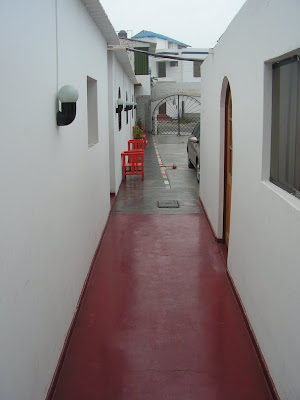I was asked to be a guest blogger on the Novel Adventurers blog, so this is cross-posted there. I decided to write about a performance in Peru.
I highly recommend visiting Novel Adventurers. Great reading and lots of armchair travel.
(By the way, the first picture isn't the one on that blog post. On this one, Blogger decided that picture looked better on its side, no matter what I did. Fie.)
 Slow down, I remind myself. I look at the audience in front of me, this time third and fourth graders (eight- and nine-year-olds) in school uniforms. They’ve settled in, sitting in rows, wondering what I’m going to do. I pied-pipered them into the hall with my harmonica. I try to engage them as quickly as possible so we can get down to business.
Slow down, I remind myself. I look at the audience in front of me, this time third and fourth graders (eight- and nine-year-olds) in school uniforms. They’ve settled in, sitting in rows, wondering what I’m going to do. I pied-pipered them into the hall with my harmonica. I try to engage them as quickly as possible so we can get down to business.That is, the business of stories. I’m a full-time storyteller, and this audience is in Peru, made up mostly of kids who are learning English as a second language. At this school, a few are native English speakers. I pull out my map of the United States. This is not just a geography lesson, but a way for the students to get used to my voice and accent before I begin the stories. I show them Kansas, where I live. “But I was born over here in Rhode Island. My mother lives in Maine. My brother lives in Oregon. My sister lives in Kansas. My sister lives in Wisconsin. My brother lives in Kansas.” By this time, the kids are laughing. “My brother lives in Vermont. And my sister lives in Massachusetts. I have three brothers and three sisters.
We’re almost ready for the stories. “I brought a friend with me, in my bag. Do you travel with your friends in a bag?” I reach in and pull out my old lady puppet, Trixie. “Una bruja!” I hear. I answer in English, “She does look like a witch, you’re right, but she’s not. She’s just old. She’s 111 years old.” Trixie introduces herself and she and I discuss which stories to tell. “Can we have a story about hair?” she asks. “Hair?!” It becomes clear that she wants either Rapunzel or Robert Munsch’s story, Stephanie’s Ponytail, (I have his permission to tell this). I sit Trixie on the chair gently, with her head in her lap. She may well fall asleep.
We’re off. I tell stories for about 45 minutes, with puppets and songs in between. My baby puppet is always a big hit—she could pop her pacifier out of her mouth twenty times and get a laugh each time. In this show, she only does it seven times. With middle school and high school students, I tell more sophisticated stories with fewer or no puppets. With this audience, I do a short Q and A at the end. They ask about stories, about puppets, about me.
 |
| Photo by Annie Tichenor |
Here are some of the questions they ask:
Q. Where do you get your stories?
A. Many are folktales, which I find in books or I hear from other storytellers. Some are from books, and some are my own stories.
Q. How long have you been a storyteller?
A. I’ve been telling stories since 1988. I told stories in my job as a children’s librarian for five years and then in 1993, I left my job to become a full-time storyteller.
Q. What’s your favorite story?
A. That’s a good question. The big rule in storytelling is, only tell stories you love. So I love all my stories. My favorite is the one I’m telling at that moment. The favorite story of listeners is usually The Ghost with the One Black Eye.
Q. What countries have you visited to tell stories?
A. I’ve performed around the United States and in Belgium, Mexico, Bulgaria, Germany, Brazil, and Peru.
A. I’ve performed around the United States and in Belgium, Mexico, Bulgaria, Germany, Brazil, and Peru.
Q. Do you have any more puppets?
A. I have more at home. I have around 75 puppets in all. In my house I have a puppet room, where they all live.
Q. Do you like telling stories?
A. I love it. I’m lucky that I get to work at something I love.
A. I love it. I’m lucky that I get to work at something I love.






















 There were amazing mosaics inside the layers. This is close to the top.
There were amazing mosaics inside the layers. This is close to the top.





































